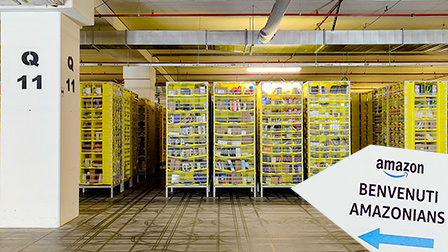|
|||||||
|
|
|
 |
|
|
Strumenti |
|
|
#21 |
|
Member
Iscritto dal: Aug 2005
Messaggi: 239
|
dai raga nessuno mi sa aiutare? vi prego non so che fare
|
|
|

|
|
|
#22 |
|
Senior Member
Iscritto dal: Oct 2007
Messaggi: 2971
|
riassumi un attimo in che situazione sei ora perché ho perso il filo.
|
|
|

|
|
|
#23 |
|
Member
Iscritto dal: Aug 2005
Messaggi: 239
|
allora ho installato ubuntu però all'avvio non mi parte nessun bootloader ma va direttamente windows xp non me lo vede proprio linux c'è da dire che l'altra volta installando leopard per farli vedere entrambi ho fatto da diskpart di windows ho reso attiva la partizione windows e quindi mi vede sempre prima quella ecco tutto che posso fare?
|
|
|

|
|
|
#24 |
|
Senior Member
Iscritto dal: Oct 2007
Messaggi: 2971
|
Win funziona, la partizione di ubuntu c'é sempre ? Se installi Ext2IFS_1_11.exe ti permette di vedere dentro la partizione di ubuntu. Vai in /boot/grub e vedi se c'è il file menu.lst e posta il contenuto.
|
|
|

|
|
|
#25 | |
|
Member
Iscritto dal: Aug 2005
Messaggi: 239
|
Quote:
# menu.lst - See: grub(8), info grub, update-grub(8) # grub-install(8), grub-floppy(8), # grub-md5-crypt, /usr/share/doc/grub # and /usr/share/doc/grub-doc/. ## default num # Set the default entry to the entry number NUM. Numbering starts from 0, and # the entry number 0 is the default if the command is not used. # # You can specify 'saved' instead of a number. In this case, the default entry # is the entry saved with the command 'savedefault'. # WARNING: If you are using dmraid do not use 'savedefault' or your # array will desync and will not let you boot your system. default 0 ## timeout sec # Set a timeout, in SEC seconds, before automatically booting the default entry # (normally the first entry defined). timeout 10 ## hiddenmenu # Hides the menu by default (press ESC to see the menu) #hiddenmenu # Pretty colours #color cyan/blue white/blue ## password ['--md5'] passwd # If used in the first section of a menu file, disable all interactive editing # control (menu entry editor and command-line) and entries protected by the # command 'lock' # e.g. password topsecret # password --md5 $1$gLhU0/$aW78kHK1QfV3P2b2znUoe/ # password topsecret # # examples # # title Windows 95/98/NT/2000 # root (hd0,0) # makeactive # chainloader +1 # # title Linux # root (hd0,1) # kernel /vmlinuz root=/dev/hda2 ro # # # Put static boot stanzas before and/or after AUTOMAGIC KERNEL LIST ### BEGIN AUTOMAGIC KERNELS LIST ## lines between the AUTOMAGIC KERNELS LIST markers will be modified ## by the debian update-grub script except for the default options below ## DO NOT UNCOMMENT THEM, Just edit them to your needs ## ## Start Default Options ## ## default kernel options ## default kernel options for automagic boot options ## If you want special options for specific kernels use kopt_x_y_z ## where x.y.z is kernel version. Minor versions can be omitted. ## e.g. kopt=root=/dev/hda1 ro ## kopt_2_6_8=root=/dev/hdc1 ro ## kopt_2_6_8_2_686=root=/dev/hdc2 ro # kopt=root=UUID=8ef6079d-c5ac-4643-b110-eddb5a62c624 ro ## Setup crashdump menu entries ## e.g. crashdump=1 # crashdump=0 ## default grub root device ## e.g. groot=(hd0,0) # groot=(hd3,1) ## should update-grub create alternative automagic boot options ## e.g. alternative=true ## alternative=false # alternative=true ## should update-grub lock alternative automagic boot options ## e.g. lockalternative=true ## lockalternative=false # lockalternative=false ## additional options to use with the default boot option, but not with the ## alternatives ## e.g. defoptions=vga=791 resume=/dev/hda5 # defoptions=quiet splash locale=it_IT ## should update-grub lock old automagic boot options ## e.g. lockold=false ## lockold=true # lockold=false ## Xen hypervisor options to use with the default Xen boot option # xenhopt= ## Xen Linux kernel options to use with the default Xen boot option # xenkopt=console=tty0 ## altoption boot targets option ## multiple altoptions lines are allowed ## e.g. altoptions=(extra menu suffix) extra boot options ## altoptions=(recovery) single # altoptions=(recovery mode) single ## controls how many kernels should be put into the menu.lst ## only counts the first occurence of a kernel, not the ## alternative kernel options ## e.g. howmany=all ## howmany=7 # howmany=all ## should update-grub create memtest86 boot option ## e.g. memtest86=true ## memtest86=false # memtest86=true ## should update-grub adjust the value of the default booted system ## can be true or false # updatedefaultentry=false ## should update-grub add savedefault to the default options ## can be true or false # savedefault=false ## ## End Default Options ## title Ubuntu 7.10, kernel 2.6.22-14-generic root (hd3,1) kernel /boot/vmlinuz-2.6.22-14-generic root=UUID=8ef6079d-c5ac-4643-b110-eddb5a62c624 ro quiet splash locale=it_IT initrd /boot/initrd.img-2.6.22-14-generic quiet title Ubuntu 7.10, kernel 2.6.22-14-generic (recovery mode) root (hd3,1) kernel /boot/vmlinuz-2.6.22-14-generic root=UUID=8ef6079d-c5ac-4643-b110-eddb5a62c624 ro single initrd /boot/initrd.img-2.6.22-14-generic title Ubuntu 7.10, memtest86+ root (hd3,1) kernel /boot/memtest86+.bin quiet ### END DEBIAN AUTOMAGIC KERNELS LIST # This is a divider, added to separate the menu items below from the Debian # ones. title Other operating systems: root # This entry automatically added by the Debian installer for a non-linux OS # on /dev/sdd1 title Windows NT/2000/XP (loader) root (hd3,0) savedefault makeactive map (hd0) (hd3) map (hd3) (hd0) chainloader +1 |
|
|
|

|
|
|
#26 |
|
Senior Member
Iscritto dal: Sep 2006
Messaggi: 1886
|
Ciao.
Infila il live-cd ed avvia linux in modalità live, appunto. Quando il sistema si è caricato, devi montare la partizione con il linux che hai installato in modo da potervi accedere; quindi apri una console di testo e digita: sudo mount -t ext3 /dev/sda2 /mnt (immagino che tu abbia installato linux nella seconda partizione dall'hd diviso in 2 e che l'hd sia SATA) quindi, sempre da console, dài cd /mnt e poi ls e vedi se ci sono le varie directories del sistema installato. In caso affermativo dài cd .. e poi sudo chroot /mnt. Adesso sei entrato nel sistema. Ora non ti resta che dare un sudo grub-install /dev/sda. Quindi scrivi exit e riavvia il sistema. Se con il comando citato non hai avuto messaggi d'errore, dovrebbe partire il bootloader grub che ti permetterà di scegliere il sistema da avviare. Stop. EDIT: ho visto che hai installato linux nella seconda partizione del quarto disco, quindi correggi il comando sudo mount etc. con /dev/sdd2 invece di /dev/sda2. Il resto resta lo stesso. Domanda: ma che hai nel primo disco e nel secondo? Il terzo suppongo sia il masterizzatore... Ultima modifica di ezln : 06-03-2008 alle 19:27. |
|
|

|
|
|
#27 | |
|
Member
Iscritto dal: Aug 2005
Messaggi: 239
|
Quote:
|
|
|
|

|
|
|
#28 |
|
Member
Iscritto dal: Aug 2005
Messaggi: 239
|
|
|
|

|
|
|
#29 |
|
Senior Member
Iscritto dal: Sep 2006
Messaggi: 1886
|
|
|
|

|

|
| Strumenti | |
|
|
Tutti gli orari sono GMT +1. Ora sono le: 19:33.























